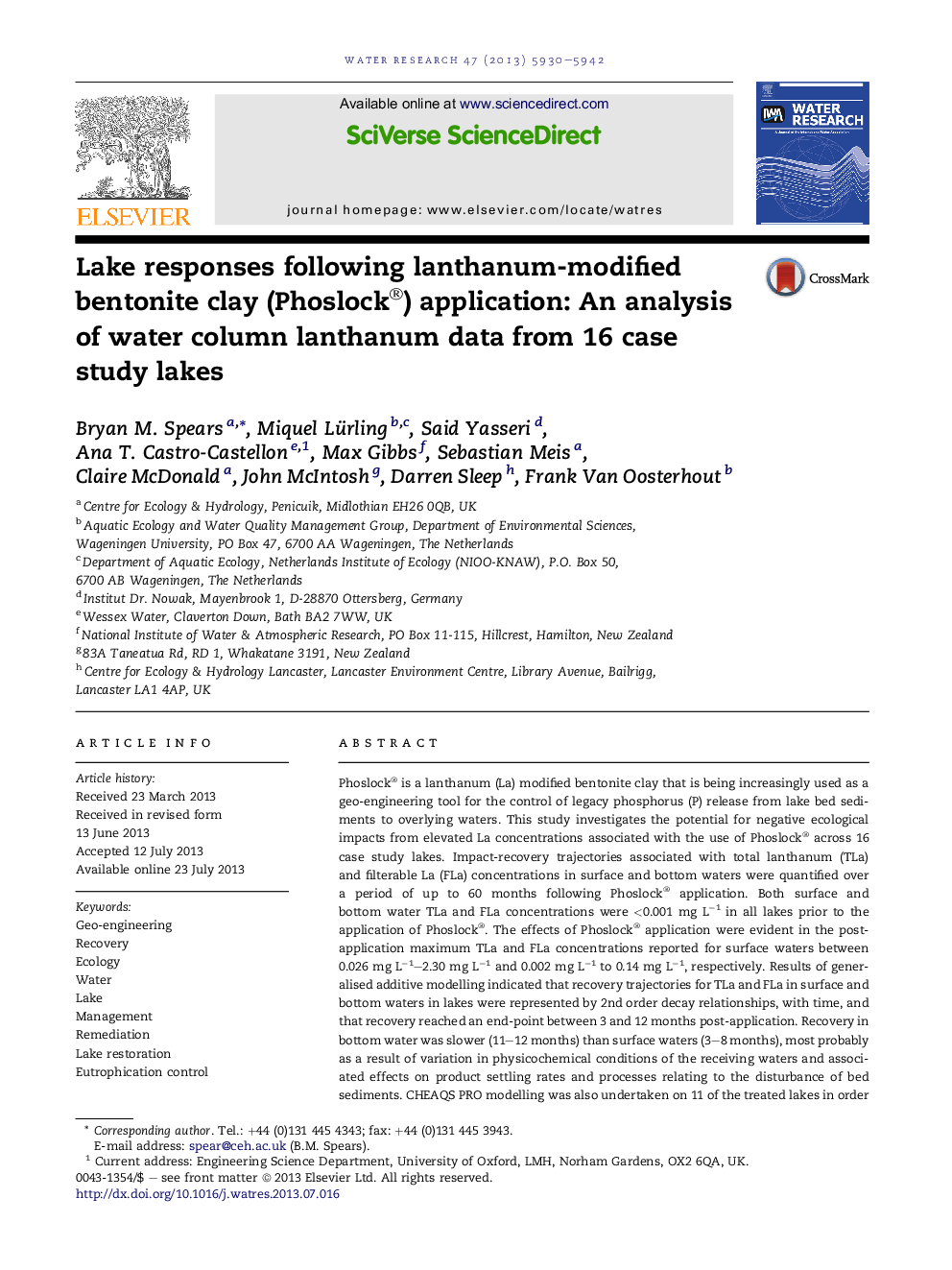| کد مقاله | کد نشریه | سال انتشار | مقاله انگلیسی | نسخه تمام متن |
|---|---|---|---|---|
| 6367538 | 1316842 | 2013 | 13 صفحه PDF | دانلود رایگان |

- Lanthanum (La) concentrations were investigated following Phoslock® treatment in 16 lakes.
- La recovery reached an end-point between 3 and 12 months post-application.
- La3+ ions were unlikely to cause ecotoxicological effects in moderate-high alkalinity lakes.
- Ecological effects of La3+ should be assessed prior to applications in very low alkalinity lakes.
Phoslock® is a lanthanum (La) modified bentonite clay that is being increasingly used as a geo-engineering tool for the control of legacy phosphorus (P) release from lake bed sediments to overlying waters. This study investigates the potential for negative ecological impacts from elevated La concentrations associated with the use of Phoslock® across 16 case study lakes. Impact-recovery trajectories associated with total lanthanum (TLa) and filterable La (FLa) concentrations in surface and bottom waters were quantified over a period of up to 60 months following Phoslock® application. Both surface and bottom water TLa and FLa concentrations were <0.001 mg Lâ1 in all lakes prior to the application of Phoslock®. The effects of Phoslock® application were evident in the post-application maximum TLa and FLa concentrations reported for surface waters between 0.026 mg Lâ1-2.30 mg Lâ1 and 0.002 mg Lâ1 to 0.14 mg Lâ1, respectively. Results of generalised additive modelling indicated that recovery trajectories for TLa and FLa in surface and bottom waters in lakes were represented by 2nd order decay relationships, with time, and that recovery reached an end-point between 3 and 12 months post-application. Recovery in bottom water was slower (11-12 months) than surface waters (3-8 months), most probably as a result of variation in physicochemical conditions of the receiving waters and associated effects on product settling rates and processes relating to the disturbance of bed sediments. CHEAQS PRO modelling was also undertaken on 11 of the treated lakes in order to predict concentrations of La3+ ions and the potential for negative ecological impacts. This modelling indicated that the concentrations of La3+ ions will be very low (<0.0004 mg Lâ1) in lakes of moderately low to high alkalinity (>0.8 mEq Lâ1), but higher (up to 0.12 mg Lâ1) in lakes characterised by very low alkalinity. The effects of elevated La3+ concentrations following Phoslock® applications in lakes of very low alkalinity requires further evaluation. The implications for the use of Phoslock® in eutrophication management are discussed.
161
Journal: Water Research - Volume 47, Issue 15, 1 October 2013, Pages 5930-5942